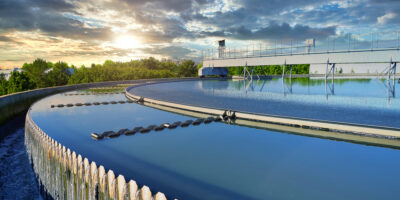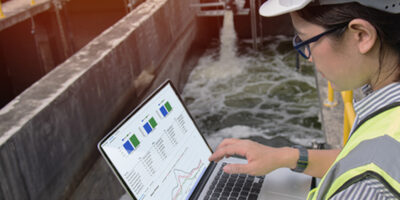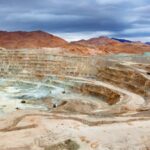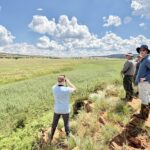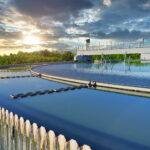Water utilities around the world lose more than US$14 billion every year due to non-revenue water (NRW). NRW is water that is produced but cannot be billed. The loss can be the result of leakage, overflow, theft of water, inaccurate metering, or free use (for example, for firefighting).
The World Bank recommends that NRW should be less than 25% of the total water produced. However, in reality, the percentage of NRW can be as high as 60% in many countries. A high level of NRW is detrimental to a water utilities’ financial viability and poses an extra burden on customers. It’s no wonder NRW reduction is a priority in many integrated urban water management (IUWM) plans.
Water utilities incur substantial financial costs in the treatment and pumping of water, and revenue is lost when water – which could have otherwise been sold – is leaked back into the ground. But it’s not just about financial losses. A study by the World Bank estimates that the world’s yearly volume of physical water loss amounts to 32 billion cubic metres—half of which occurs in developing countries. That’s a lot of water loss—especially for countries that are already thirsting for water.
Benefits of non-revenue water control and reduction
The benefits of NRW reduction and control are many and interlinked. NRW results in opportunity costs for utilities, cities, the environment and the broader economy.
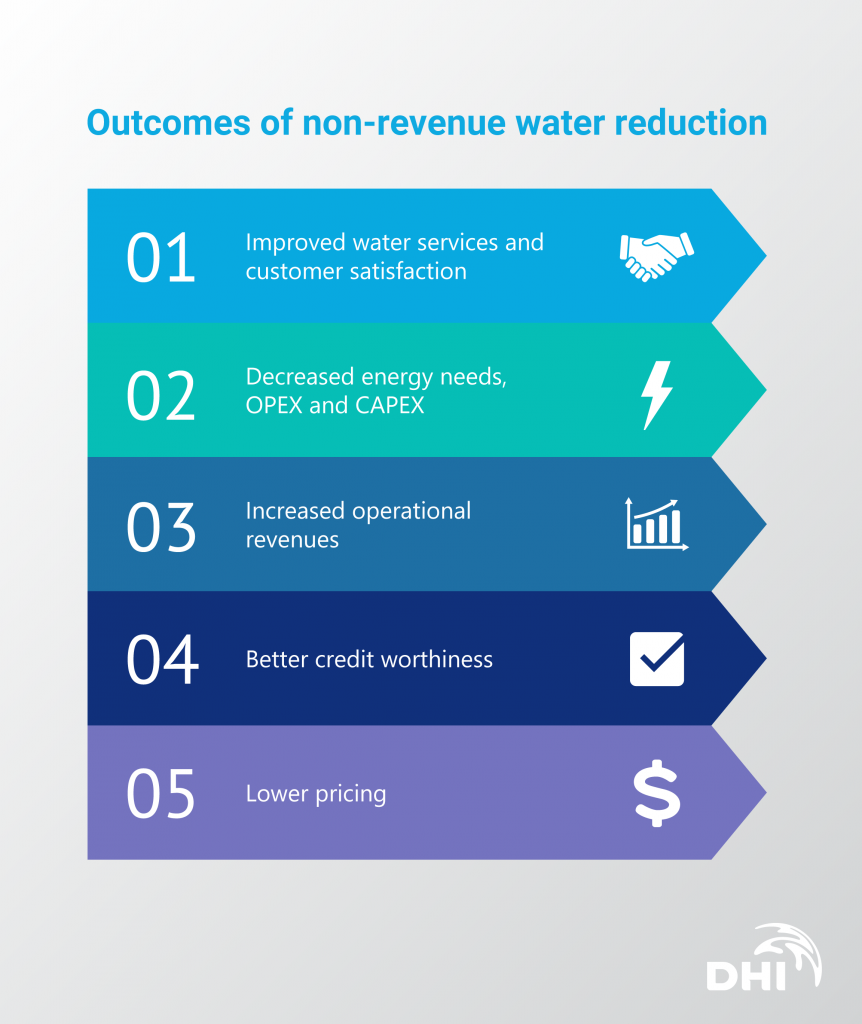
Aging infrastructure is the top cause of non-revenue water
High leakage levels, water overflow and supply interruptions are the direct consequences of old pipes and poorly maintained pipe systems. Leaking and broken pipes increase network flow rates, causing unnecessary high-pressure losses and irregular water supply during peak demand hours. The result? Financial losses, customer complaints, reputation impacts and potential higher tariffs for everyone.
‘Around 90% of water that is physically lost from leaks cannot be seen on the surface. These leaks might eventually become visible after many years, but until then, large volumes of water are lost every year. Sometimes, undetected leaks can be quite large, such as those that run directly into a sewer or a drain. Therefore, a water utility that does not practice a policy of efficient and intensive active leakage control will always have a high level of leakage, except if the infrastructure is new and/or in excellent condition.’
‘The Issues and Challenges of Reducing Non-Revenue Water’, ADB, 2010
What are some possible solutions?
All is not lost. The problem of aging infrastructure can be effectively countered by using modern technologies, like hydraulic models and digital replicas of water distribution systems. Models identify critical parts of a water supply and distribution system to help water utilities optimise pressure control while implementing a cost-efficient leakage management plan. Unlike physical inspections which can be costly and demanding on human resources, hydraulic models – which are now often built within smart leakage management technology – can help you answer the following questions quickly:
- Which are the most important pipes in the network to give extra attention to?
- Which pipes should be prioritised for leakage repairs?
- What’s the potential water loss in a ‘do-nothing’ scenario?
- What are the costs and benefits of water leakage versus repair expenses?
- How much leakage can be reduced if different measures are implemented?
Some NRW solutions even monitor the change of leakage levels in District Metered Areas (DMAs) by automatic evaluation of data and trigger real-time alerts whenever a leak is detected.
What to consider when exploring non-revenue water solutions
Successful and long-term management of urban water leakage levels requires advanced technologies and reliable data. When considering NRW solutions for your integrated urban water management plan, you should ask the following questions:
- Does the solution enable collaboration and knowledge sharing with all stakeholders, such as network operators, water utility managers, city leaders and citizens?
- Does the solution monitor water flow in relatively small parts of the distribution network to provide snapshots of real-time losses?
- Does the solution enable access to data from various portals such as SCADA, GIS, invoicing and metering for the best representation?
- Is the solution’s process user-friendly and automated? For example, will the system run all analyses and prepare output information automatically at chosen time intervals?
Implementing an NRW solution helps optimise and reduce operational costs, as well as improve water supply reliability. A well thought out plan can improve existing water supply systems, reduce legal liability, decrease insurance cost (due to fewer main breaks) as well as identify illegal connections and non-functional meters in the network.

